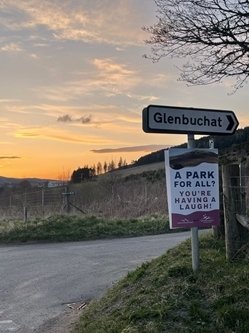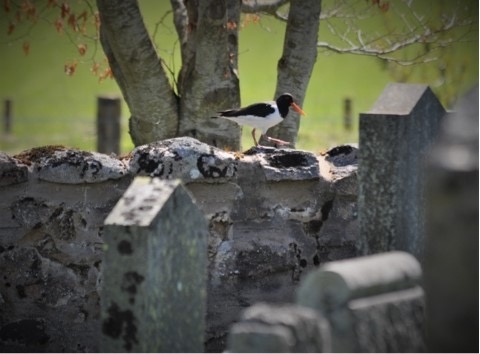By Rory Kennedy, Director Scotland, GWCT
 Conservation is sometimes misunderstood as being all about wildlife. The reality is that conservation doesn’t operate in a vacuum, away from the human world. Pristine wilderness rarely needs our meddling, unless those very wildernesses are themselves threatened by us. Before man, there were self-sustaining ecosystems. Sometimes species became extinct, but usually because they had reached the end of the genetic road. Wild populations would naturally ebb and flow, though undoubtably many of those population troughs would be unacceptably precarious in the eyes of us humans, who gauge cycles in the terms of our own short, irrelevant lives. As such, addressing the human element is the real crux of conservation and every solution needs pragmatism at its heart.
Conservation is sometimes misunderstood as being all about wildlife. The reality is that conservation doesn’t operate in a vacuum, away from the human world. Pristine wilderness rarely needs our meddling, unless those very wildernesses are themselves threatened by us. Before man, there were self-sustaining ecosystems. Sometimes species became extinct, but usually because they had reached the end of the genetic road. Wild populations would naturally ebb and flow, though undoubtably many of those population troughs would be unacceptably precarious in the eyes of us humans, who gauge cycles in the terms of our own short, irrelevant lives. As such, addressing the human element is the real crux of conservation and every solution needs pragmatism at its heart.
The reality is that, for almost all of Europe, and certainly Britain, self-sustaining ecosystems have gone, and those that follow the ideology of the UK rewilder are, in reality, dabbling, playing god on their own small patch of the landscape as much as the gamekeeper or the farmer. ‘Nature can happen, if only I can wipe out all its largest mammals’, seems an ideological paradox to those who are wedded to the existing landscape. This is not intended as an argument against rewilding, though I question the purity of that ideology in making it work for the optimal biodiversity outcome.
This week has seen unprecedented protests within the Cairngorms National Park. Well-ordered and naturally law-abiding workers whose political excesses extend to social media vlogs and signage stating, ‘Welcome to Scotland’s Disneyland’. No roads were blocked, no commuters faced disruption, but we should not let orderliness and respect for the public mask this deep-seated anger within the park’s boundaries. Much of this I witnessed as I visited our Auchnerran demonstration farm in the heart of the park, where we strive to find a balance for wader-friendly conservation and viable hill farming. The curlew were still thin on the ground and I struggled to get a decent photograph of the oystercatchers and lapwings that bobbed and danced off at the mere sight of my distant figure.
To understand the Cairngorms conflict, we need to appreciate the historical context, as is often the way of understanding human-wildlife conflict. When our national parks were conceived it was a hugely well-intentioned step and was about engagement of the general public with the land rather than preserving ‘wilderness’, the latter point proven by the fact that the International Union for Conservation of Nature had no criteria by which to categorise the proposed parkland. Even the majesty of Yellowstone, the mother of all national parks, is not considered category 1 wilderness. Loch Lomond and the Trossachs National Park is a mere 30 minutes from the industrial sprawl of Glasgow. Our parks’ landscapes, carved out by thousands of years of human habitation and management, required the creation of a whole new IUCN ‘category 5’ designation – a cultural landscape – and our park authorities carry a statutory obligation to sustainable economic development. In Loch Lomond and the Trossachs National Park, this recently meant the creation of an industrial-scale mining operation, and in the Cairngorms National Park, the creation of an entire new town.
However, we should not denigrate our national parks’ value based on that. Many iconic, yet declining, bird species in the UK today are largely wedded to the land management fortunes of humans, and many carry this moniker – the barn owl, the fieldfare, the corn bunting, the corncrake. So many of our species have preferences that are tied to hundreds of years of human pastoral coexistence – only to be shattered now by a few clumsy generations, led by ill-conceived government policy.
The Cairngorms is a working environment, with huge swathes of grouse moor that may look ugly and altered to the casual tourist in Ballater. It’s subjective – others flock to see the resplendent purple heather blooms, so celebrated in song and verse. However, once the summer bike hire demand subsides, who is it that keeps the Victorian grandeur of the local hotels filled? Once the ski guides have left after the ever too brief season, who is still working the hillscape and their children filling the primary schools? The answer is simple: farmers and keepers.
The Cairngorms National Park is blessed with a rich tourism industry, but it is founded on nearly 200 years as the world’s most prestigious field sports destination and its associated royal patronage. Throughout this time, the red stag, as a romantic icon, a sporting asset and a visual gift to wildlife-starved urban visitor, has created far more tourism value for the region than any government-funded body could ever hope to. Yet many now see it as a pest species, often the ideological victim of this very cultural baggage. Surely the sporting heritage that has sculpted the region’s landscapes and its culture is the very basis of the initial award of IUCN category 5 classification:
“A protected area where the interaction of people and nature over time has produced an area of distinct character with significant ecological, biological, cultural and scenic value: and where safeguarding the integrity of this interaction is vital to protecting and sustaining the area and its associated nature conservation and other values.”
Meanwhile, through much of Europe, indigenous cultures are now celebrated and even venerated. If anywhere in the UK has this rich cultural tapestry, it is the Cairngorms. I used to visit an elderly uncle who was a retired gamekeeper in Ballater. I remember the crudely drawn and risqué tattoos on his arms from his time in Japanese POW camps. He rarely strayed from his village, yet it was maybe ironic that my visit usually meant this young child came away with months of back copies of the National Geographic, presenting the exotic, bare-breasted reality of far-flung peoples. I remember his stories of recent ancestors collecting the then-bountiful supply of lapwing (peewip) eggs from the fields as a ready food source, which seemed equally exotic to my ears. These people lived as one with the land. Most of all, I remember his ancient African grey parrot that, like him, spoke perfect Doric (Scots dialect). In its cry of ‘fu,ya,den’ it encapsulated a distinct indigenous culture, the sort the National Geographic I had bundled under my arm should have, and would have, celebrated had they been there.
I now run the Scottish operations of the GWCT in Scotland. We deal in scientific fact, and facts matter more than feelings, however well meaning. But fact also shows that grouse moors are the best custodians of some of our rarest upland species. The curlew is the RSPB’s bird of highest conservation concern yet the distribution map of breeding curlew in the UK is almost a mirror image of the distribution of grouse moors, a correlation supported by numerous scientific studies – along with red-listed oystercatchers, lapwings, black grouse, golden plover and our much-politicised mountain hare and hen harriers.
The reality is shooting estates have been a useful refuge for many species but, without being glassy eyed, many of those protesting may also find my personal positions challenging. Are shooting estates the perfect balance of biodiversity and economic viability? No. But they are likely better than the current alternative: increasingly managed by faceless corporates or funded by unwitting taxpayers. The creation and management of habitat holds an obvious value, but increasingly it is the provision of predator management, the traditional role of these keepers, that makes the difference in the much-needed biodiversity outcomes.
The GWCT will continue to hold a scientific beacon of light in the hugely polarised debate. Sit in the uncomfortable glare of scientific fact or hide in the shadows of ignorance and prejudice. That is true for all. And, as such, we are friends to all and enemies to all in this debate.

As a lowlander, it was by coincidence that yesterday I had a host of meetings across the Cairngorms. This included a very constructive meeting with the Cairngorms National Park Authority, though during the day I passed many of the signs of protestors who feel the park has forsaken their community. Despite a pressing schedule, I popped into an ancient graveyard that had served the local community since Pictish times. Several of my ancestors lie buried there; all were keepers, farmers and ghillies on these lands. I went to find the grave of my great grandfather, the purpose of my visit. Amongst the ancient stones and yew trees I found his grave and there, standing defiantly on the wall immediately above it, was my oystercatcher, waiting for its photo opportunity. Who knows, maybe he knew he was safe in the presence of all those keepers and farmers.